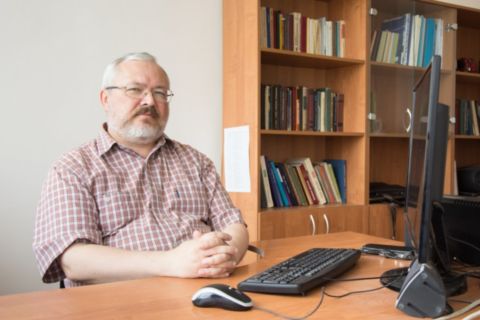Scientists from the School of Engineering and Technology of South Ural State University developed software for creating simulation models of piston internal combustion engines using digital twins technology. In the course of the work, the scientists identified general principles of creating digital twins of engines, created unique software, and patented it. They implemented the developed methods and mathematical models using the Internet of Things technology. The study is published in the highly-ranked scientific journal Energies.
New technologies for engine building
The modern economy requires the maximum reduction in time and money spent on the development and launching of products; the analysis of facilities condition at all stages of the life cycle; prompt changes in their design parameters and operating modes. This fully applies to internal combustion engines - the sources of mechanical energy for vehicles and the small electric power stations.
A team of scientists from the Faculty of Automotive Engineering headed by D.Sc., Professor of the Wheeled and Track Laying Vehicles Department Andrei Malozyomov conducted research and developed software for creating a digital twin of an engine, which will allow to design new engines and improve the designs of existing models in the future. D.Sc., Professor Sergey Alyukov, Ph.D., Associate Professor Vladimir Bondar, and student Georgy Malozyomov, winner of the 2019 UMNIK competition with the project "Development of a Component Library in Modelica Language for Simulation of Piston Internal Combustion Engines" were in the team.

Experts predict that the digital twin market will reach $ 16 billion in five years. Research shows that 13% of organizations with IoT projects already have digital twins. By 2021, half of the large industrial companies will use this technology, which will increase their efficiency by 10%. The task of domestic science is to help Russian businesses not fall out of this trend.
“Currently, there is specialized foreign software for engine simulation, which corresponds to the digital twin concept. A common disadvantage of these software products is the closed source. You are not allowed to control the mathematical model accuracy and its parameters to make changes to the model components. It's also difficult to create components that describe new technical solutions. Excessive detailing of components and vice versa, excessively enlarged components do not provide sufficient flexibility when creating digital twins. Methods for creating digital twin engines do not fully meet the needs of the industry at the moment,” Andrey Malozyomov says.
There is a need in the Russian economy to develop competitive domestic software products for creating digital twins of piston internal combustion engines. It determines the relevance of this development. Scientists believe that this will help improve the technical level of products and the engine industry's efficiency.
Alternative to foreign analogs
While working on the study, scientists studied the general principles of creating digital twins of engines, created software following the methods and mathematical models used.
“We were focused on solving both specific theoretical and practical problems. We used the research results: we developed technical solutions for short-term boosting of tracked vehicle diesel engines, to improve the starting qualities of diesel engines in extremely low temperatures, and to optimize the thermal balance of tracked vehicle power plants. The patented software is not inferior in its functionality to foreign counterparts. And in calculating the processes of restarting and starting, wear, the possibility of predicting reliability, the ability to quickly adjust mathematical models our software surpasses foreign analogs. The developed software has already been used in the performance of work, replacing expensive import programs - this is one of the main reasons for the need to create this program,” Sergey Alyukov explains.
The research team of South Ural State University has been cooperating for a long time with such engine-building enterprises as Chelyabinsk Tractor, Ural Diesel-Engine, Altai Engine-Building Plants, Barnaultransmash, KamAZ. Enterprises show interest in such developments, are ready to purchase them. This is especially true for enterprises that cannot use the services of technical support since the design parameters of the engines are information of limited access.
The new developments can be applied in the creation of digital twins of piston internal combustion engines to improve the technical level of products. This technology will reduce the time and money spent on constructive refinement by replacing most of the technical tests with virtual ones.
Research in the field of new technologies is among the priorities of the Ural Interregional Scientific and Educational Center (UISEC) "Advanced production technologies and materials", which is created with the joint efforts of UrFU, SUSU, KSU, other regional higher educational institutions, the Ural branch of the Russian Academy of Sciences, industrial enterprises and the government of the Chelyabinsk, Sverdlovsk, and Kurgan regions.




